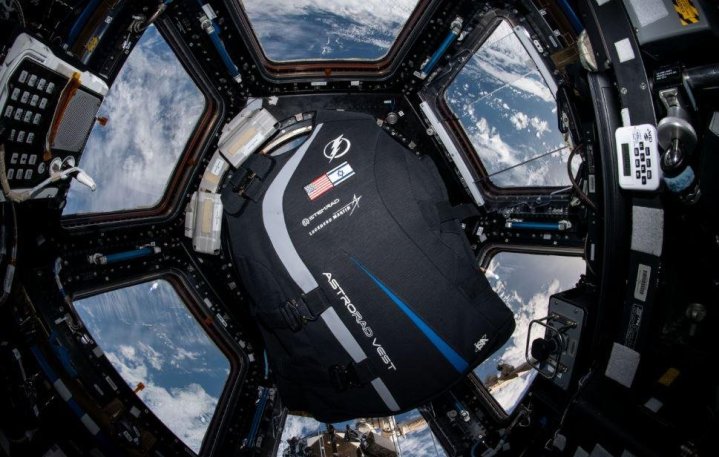
Beyond the protection of the Earth’s magnetosphere, astronauts are bombarded with dangerous ionizing radiation. This radiation, as well as causing problems with electronics, can be dangerous to human health and is a risk for exploring beyond Earth’s orbit and traveling to the moon or to Mars.
One approach to solving this issue is for astronauts to stay underground or in thickly shielded habitats to keep the radiation out. But if they want to go out and explore and to move freely, something more portable is required. That’s where the AstroRad vest comes in.
Designed by Israeli company StemRad for Lockheed Martin, the AstroRad vest shields astronauts from radiation. It is based on a vest developed to protect first responders here on Earth from radioactive environments. And NASA wanted to test the vest, so last year a sample was sent to the International Space Station (ISS) so the astronauts there could wear it and try it out for comfort.
“We are trying to see if astronauts can wear it as long as possible, without experiencing pain or discomfort,” said Oren Milstein, co-founder and CEO of vest maker StemRad, in a statement. “Several astronauts will wear the vest, with eight hours as the longest period, while sleeping.”
The issue with comfort is because radiation shielding is thick and heavy, which makes it cumbersome to wear. So the new vest is made from flexible polyethylene and can be shaped to fit men or women, and protects from the pelvis up to the neck, protecting the primary organs.
“Trying to protect the entire body means adding a lot of weight,” Milstein said. “You can protect in a reasonable way, a fraction of your body, or a part of your body that happens to be the more sensitive part.”
In a recent update from the ISS, NASA said the crew was continuing to assess the vest by wearing it for various activities, and the agency has also previously said the vest will be tested out on the first test flight of the Artemis mission. NASA hopes that the vest can be used to keep astronauts safe when they go on longer space missions by reducing their exposure to radiation.



